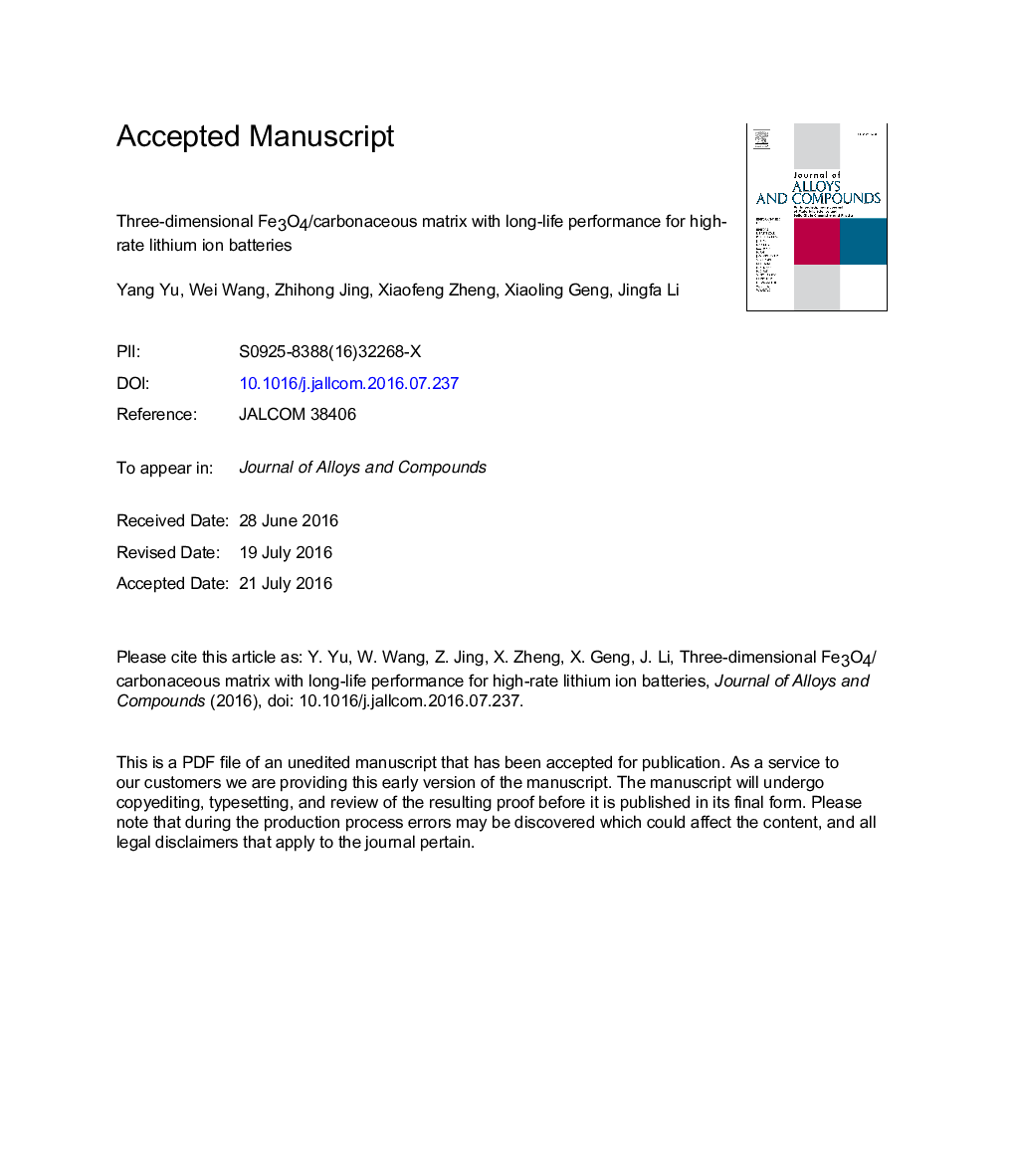| Article ID | Journal | Published Year | Pages | File Type |
|---|---|---|---|---|
| 10656316 | Journal of Alloys and Compounds | 2016 | 23 Pages |
Abstract
Three-dimensional (3D) Fe3O4/carbonaceous matrix composites are successfully assembled via a facile hydrothermal treatment of precursor followed by heat-decomposition process. Cellulose acetate (CA), a kind of polymer, as carbon source, can form a flexible and uniform 3D carbon matrix after carbonation at 500 °C, in addition of the highly degree uniformity with active Fe3O4 particles. When applied as an anode for lithium-ion batteries, these 3D Fe3O4/C composites exhibit superior electrochemical performance after prolonged cycling at high rates (â¼790 mA h gâ1 at 2C after 1000 cycles) and good rate capability at changing rates of 0.1C-3C-0.1C. The excellent performance observed from the electrochemical measurement can be attributed to the 3D architecture and the micro-carbonaceous matrix, both of which play important buffering role in the balance of volume variation and provide an excellent conductive matrix for high rate charge-discharge process.
Related Topics
Physical Sciences and Engineering
Materials Science
Metals and Alloys
Authors
Yang Yu, Wei Wang, Zhihong Jing, Xiaofeng Zheng, Xiaoling Geng, Jingfa Li,
